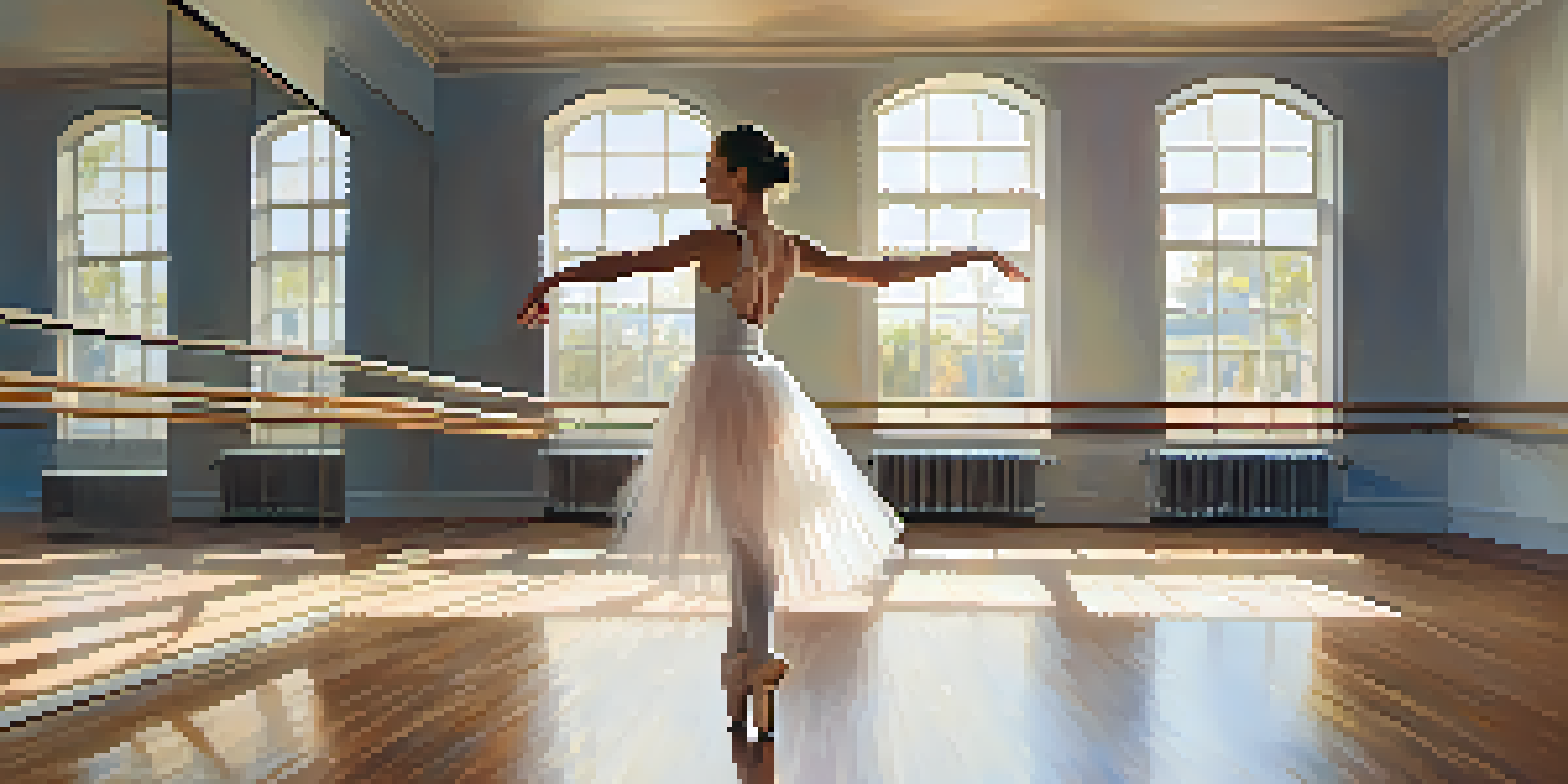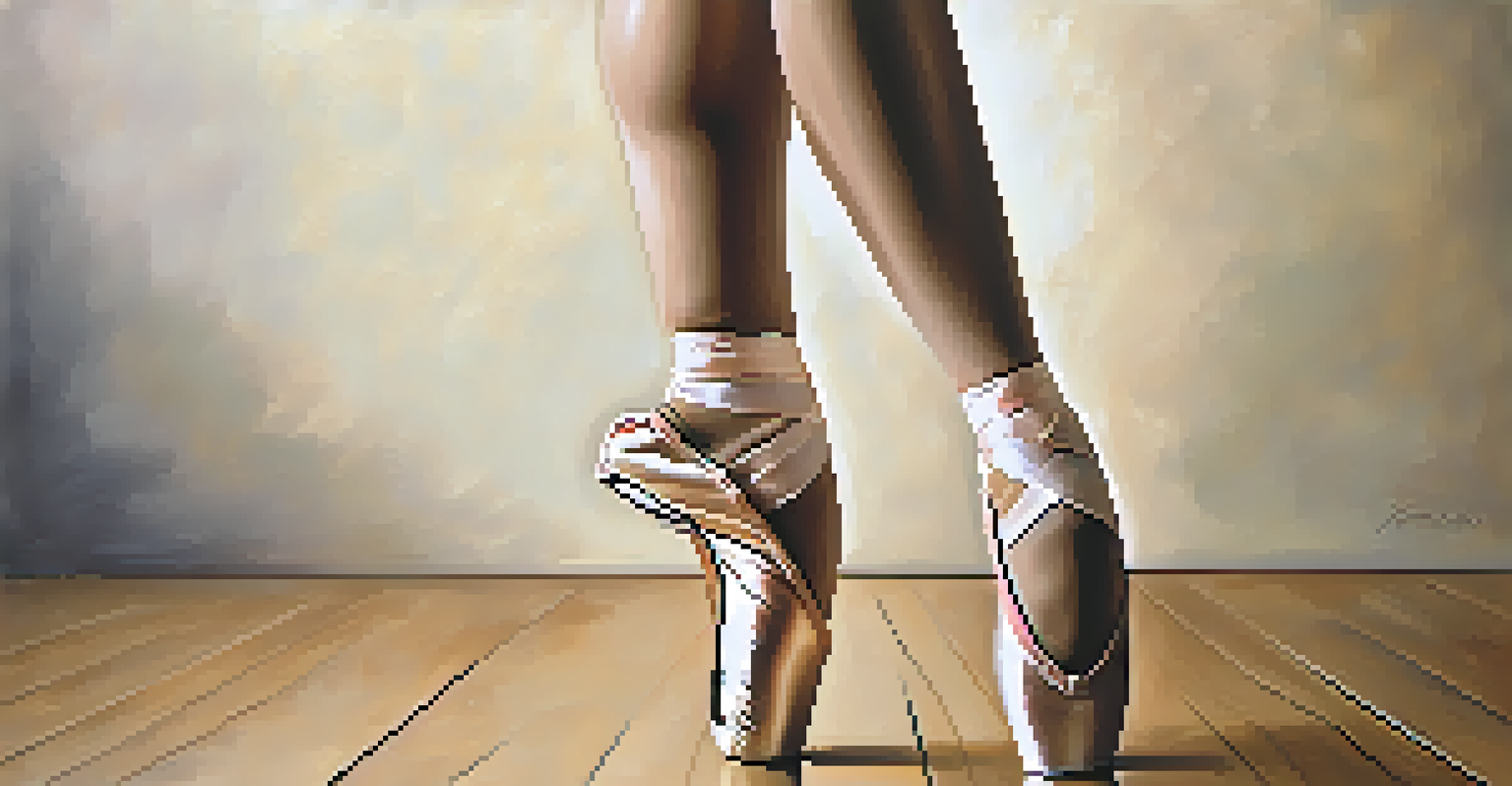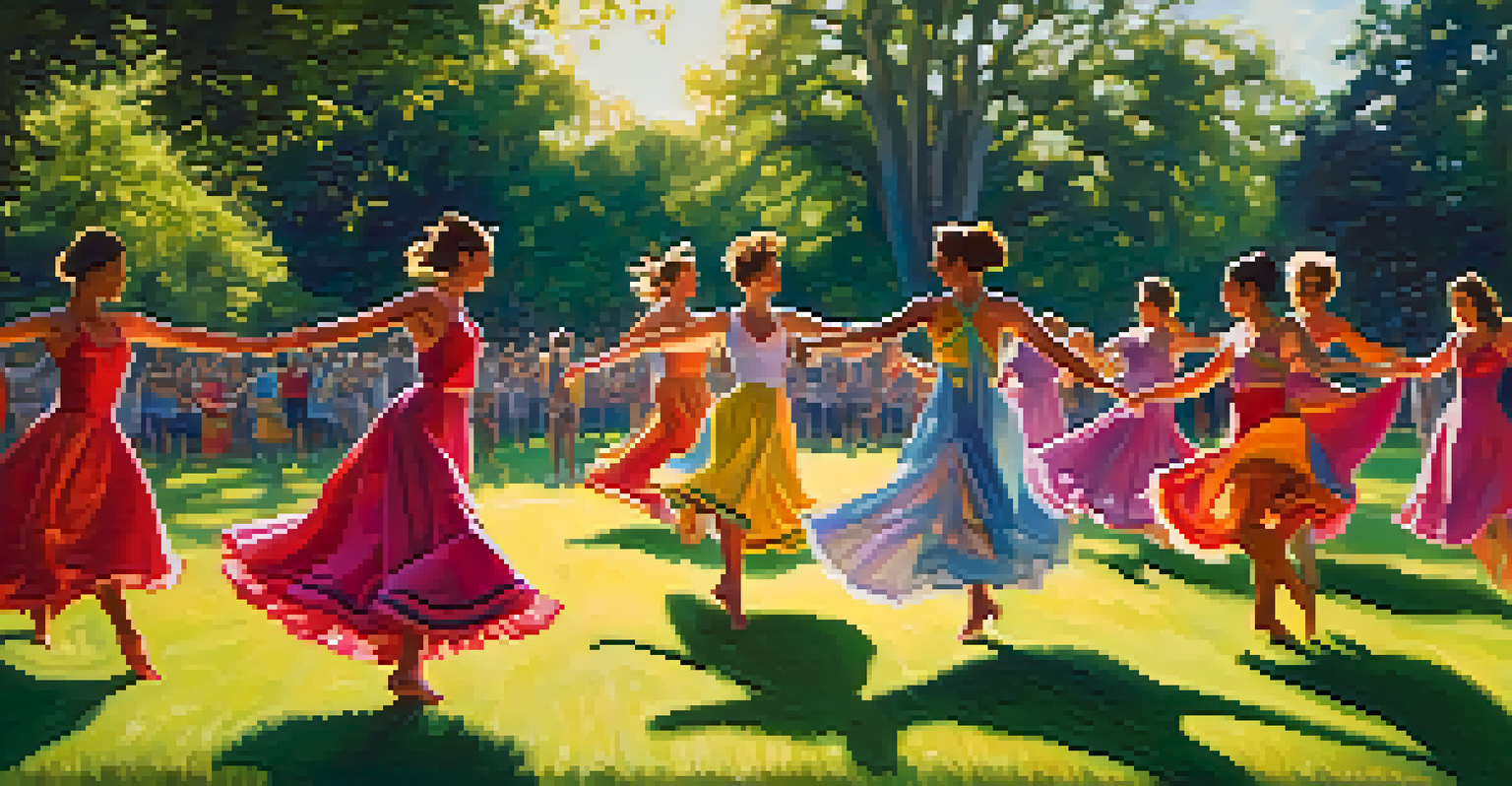The Role of Visualization in Managing Dance Anxiety

Understanding Dance Anxiety and Its Impact
Dance anxiety is a common experience among performers, often characterized by nervousness and self-doubt before or during a performance. This anxiety can stem from various sources, such as fear of judgment, perfectionism, or previous negative experiences. When left unaddressed, it can hinder a dancer's performance and enjoyment of the art.
The only thing we have to fear is fear itself.
The emotional and physical symptoms of dance anxiety can manifest in various ways, including increased heart rate, sweating, or even freezing on stage. Understanding these reactions is the first step in managing anxiety effectively. Recognizing that many dancers face similar challenges can foster a sense of community and support.
Visualization is one of the most powerful tools dancers can use to combat anxiety. By creating a mental image of success and confidence, dancers can train their minds to respond positively in high-pressure situations, making it easier to perform at their best.
What is Visualization in Dance?
Visualization, in the context of dance, involves creating strong mental images of yourself dancing successfully. This technique allows dancers to rehearse their movements mentally, which can significantly enhance their physical performance. Much like athletes visualize their plays before a game, dancers can mentally prepare themselves for their routines.

The process of visualization includes imagining the environment, the music, and even the emotions felt during a performance. This multisensory approach helps to create a vivid mental rehearsal that can lead to increased familiarity and comfort with the dance. By mentally experiencing the performance, dancers can reduce the fear associated with the actual event.
Understanding Dance Anxiety
Dance anxiety, stemming from fear of judgment and perfectionism, can hinder a dancer's performance and enjoyment.
Moreover, visualization can help dancers build confidence in their abilities. When they see themselves overcoming obstacles and performing beautifully in their mind's eye, it can translate into a more relaxed and assured performance on stage.
The Science Behind Visualization Techniques
Research supports the efficacy of visualization in enhancing performance and reducing anxiety. Studies show that mental practice can lead to improvements in motor skills, similar to physical practice. This phenomenon occurs because the brain activates the same neural pathways during visualization as it does during actual movement.
Visualization is daydreaming with a purpose.
When dancers visualize their performances, they not only rehearse their movements but also engage their emotions and self-belief. This comprehensive approach fosters a positive mindset, which is crucial for managing anxiety. The more vividly a dancer can visualize their success, the more likely they are to achieve it.
Furthermore, incorporating visualization into a dancer's regular routine can create a sense of control. By visualizing success repeatedly, dancers can condition their minds to respond positively, making it easier to cope with performance-related stress.
Practical Steps for Effective Visualization
To begin incorporating visualization into your dance practice, find a quiet space where you can focus without distractions. Close your eyes and take a few deep breaths to center yourself. Once relaxed, start to imagine yourself in a performance setting, fully immersed in the experience.
Focus on the details: visualize the stage, your costume, and the audience. Imagine yourself executing each movement with grace and confidence. The more specific and vivid your mental rehearsal, the more effective it will be in reducing anxiety before actual performances.
Power of Visualization Techniques
Visualization allows dancers to mentally rehearse their performances, enhancing their skills and reducing anxiety.
Make visualization a regular part of your routine. Just like physical practice, dedicating time each week to visualize your performances can help solidify your mental skills, making you feel more prepared and less anxious when it’s time to take the stage.
Combining Visualization with Other Techniques
While visualization is powerful, combining it with other techniques can enhance its effectiveness. For instance, pairing visualization with mindfulness practices can help ground dancers in the present moment, reducing anxiety. Mindfulness encourages awareness of thoughts and feelings without judgment, which complements visualization beautifully.
Additionally, physical warm-ups can be integrated into the visualization process. As dancers warm up their bodies, they can also visualize the movements they will perform. This dual approach reinforces muscle memory while calming the mind, creating a holistic preparation strategy.
Incorporating affirmations along with visualization can also boost confidence. Positive self-talk can shift a dancer's mindset, transforming negative thoughts into empowering beliefs, reinforcing the mental images created during visualization.
Overcoming Common Challenges in Visualization
Many dancers may encounter challenges when starting their visualization practice. One common hurdle is maintaining focus, as wandering thoughts can disrupt the visualization process. To combat this, it's essential to practice regularly, gradually training the mind to stay engaged during visualization sessions.
Another challenge is the tendency to visualize negative outcomes. It’s important to consciously redirect these thoughts towards positive scenarios. A helpful strategy is to acknowledge the negative thought and then replace it with a positive image, reinforcing a more constructive mindset.
Combining Techniques for Success
Integrating visualization with mindfulness and affirmations can create a holistic approach to managing dance anxiety.
Lastly, some dancers may feel skeptical about the effectiveness of visualization. To overcome this, it's beneficial to start small, gradually incorporating visualization into practice. As they begin to notice improvements in their performance, skepticism will likely turn into belief in the technique's power.
Real-Life Success Stories of Visualization
Many successful dancers and performers credit visualization as a key component of their practice. For example, a renowned ballet dancer shares how visualizing her performances helped her recover from a serious injury. By mentally rehearsing her routines, she could maintain her skills and confidence despite physical limitations.
Similarly, a competitive dancer recounts how visualization transformed her performance anxiety. By consistently practicing visualization before competitions, she was able to shift her focus from fear to confidence, leading to improved performances and higher scores.

These stories illustrate that visualization isn’t just a theoretical concept; it’s a practical tool that can lead to real, tangible results in the world of dance. By learning from others’ experiences, dancers may find inspiration to integrate visualization into their own lives.